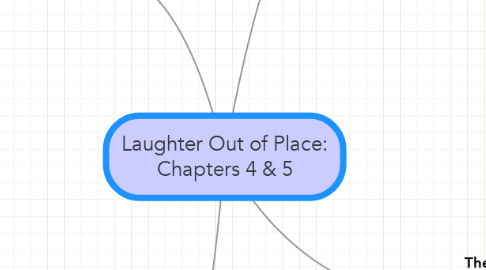
1. Pedro Paulo
1.1. Gloria's oldest son
1.1.1. distant relationship
1.1.2. considered him the most intelligent of her children
1.2. 15 years in prison
1.3. Politically aware
1.3.1. Absurd nature of poverty in Rio
1.4. Loved the "street" way of life
1.5. Girlfriend was pregnant
1.5.1. considering abortion
1.5.1.1. Pedro Paulo threatened to kill the woman
1.5.1.2. Women should know the consequences of having sex
1.5.1.3. he follows the Red Command way of thinking: clear right and wrong
1.5.1.3.1. against abortion and women who were not monogamous
1.5.1.3.2. as long as a man puts food on the table, he can have many women
1.6. Looked down on his mother's way of life
1.6.1. "slave wages"
1.6.2. no self-respecting man would support a family on minimum wage
1.6.3. Felt cheated out of his own future
1.6.3.1. lack of social mobility
1.6.3.2. gang leaders can achieve the "success" in life
1.6.3.2.1. the good life
1.7. Gloria feels responsible for his death
1.7.1. too busy to keep track of him
1.7.1.1. in and out of child correctional institution
1.7.1.2. lost authority over her own child
1.7.2. sense of loss and failure
1.7.3. lost him to the street/gang
1.7.4. adopted her nieces and nephews to save them from a similar life
2. Street Children
2.1. homeless children
2.1.1. 200,000 children living in the streets
2.2. Death squads sent to exterminate
2.2.1. off duty police
2.2.2. systematic assassination
2.2.2.1. "cleansing" the streets
2.2.3. Candelaria massacre
2.3. make upper and middle class citizens "uncomfortable"
2.3.1. seen as growing population of criminals
2.3.2. "dangerous" children
2.4. recruited to do the dirty work for gangs
2.5. provide money for impoverished parents
3. Violence in Rio
3.1. keep the authorities out of it if possible
3.1.1. keep a closed mouth
3.1.1.1. law of silence
3.2. many young men die violently
3.2.1. Adilson
3.2.1.1. shot to death
3.3. Violence is unequally distributed throughout poor neighborhoods
3.3.1. middle-class apartments have security guards
3.3.1.1. obsessed with crime
3.3.1.2. sense of vulnerability despite low exposure to crime
3.3.2. the favelas appeared internally safe and free from interpersonal violence
3.3.2.1. experience cycles of calm and violence
3.3.2.1.1. residents experience high levels of crime, adopt paradoxical solutions
3.3.2.2. safety for residents was deteriorating
3.3.2.2.1. innocent victims
3.4. The rule of the law is applied differentially in Brazil
3.4.1. hugely inequitable economy
3.4.2. different experiences based on race, class, gender and location
3.4.3. elitist liberalism
3.4.3.1. granting civil liberties on a differential basis
3.4.3.2. deeply rooted historical and structural factors
4. The Role of Gangs in Shantytowns
4.1. important role to community
4.1.1. intervened in fights
4.1.2. mediated with police
4.1.3. local level protection
4.1.3.1. protection from invading gangs
4.2. residents acknowledge the importance
4.3. Gangs fuel the upper/middle class's negative perception of the favelas
4.3.1. cyclical process
4.3.1.1. presence of gangs justifies use of force
4.3.2. the poor view all drugs as problematic
4.3.2.1. can cause unintentional involvement with the gangs
4.4. offer a place of belonging for young men
4.4.1. they are offered work by members
4.4.1.1. decent wages
4.4.2. aware of inequities in the wage system
4.4.2.1. witnessed their parents slaving away
4.4.2.2. white males make 6x the minimum wage
4.4.3. Young men can enact an ethos of masculinity
4.4.3.1. for those not joining the military
4.4.3.2. given a weapon
